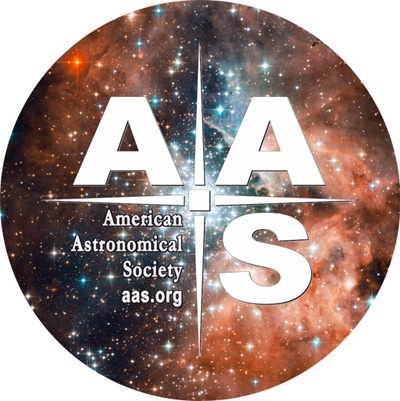16 October 2020
Susanna Kohler

A wide-field view of the region of sky that contains HR 6819, a star system roughly 1,120 light-years away. Credit: ESO/Digitized Sky Survey 2. Acknowledgement: Davide De Martin.
A few months ago, scientists announced the indirect detection of the nearest black hole to Earth. But another team is now suggesting a different explanation for this stellar puzzle.
HR 6819: History of a Mystery
From the earliest spectra of HR 6819, scientists identified this source as a bright, early-type Be star — a hot star with emission lines, likely due to the accretion of a circumstellar disk of material. As our ability to resolve detail in stellar spectra has advanced, however, a more complicated picture has emerged.
Studies in the 1980s revealed unexpected narrow absorption lines in HR 6819’s spectra, and a 2003 study showed that these lines were moving over time. This indicated that, though we couldn’t optically resolve them, there were two components of HR 6819: a Be star exhibiting no obvious motion, and a B3 III star on a 40-day orbit.

Artist’s impression of HR 6819 as a triple system. Here, an inner binary consists of a star (blue orbit) and a black hole (red orbit). A third star (blue) circles the inner pair on a wider orbit. [ESO/L. Calçada]
But what was the B3 III star orbiting? In May 2020, scientists announced an answer to the puzzle: HR 6819 must actually be a triple system. The B3 III star, they argued, is orbiting a black hole (which is why we don’t see evidence of it in the spectra), and the Be star is a distant tertiary companion, orbiting too slowly to have detectable motion.
Based on the B3 III star’s orbit, the black hole would need to weigh more than 4 solar masses — and at just 1,120 light-years distance from Earth, this object would be the closest black hole known. But could there be another explanation for HR 6819’s spectra?
Just the Two of Us
In a new study, Georgia State University scientists Douglas Gies and Luqian Wang argue that HR 6819 isn’t a triple system after all. Instead, it’s a simple binary, consisting only of the two known components: the Be star, and the B3 III star.
If HR 6819 is merely a binary, then the B3 III star should show reflex orbital motion with the same period of 40 days — but this motion could be small, and hard to detect in the complex spectra of the system.

Observed and fitted radial velocity curves for the B3 III star (filled circles) and the disk surrounding the Be star (open circles). The evident orbital motion suggests the two stars comprise a binary system. [Gies & Wang 2020]
To look for it, Gies and Wang analyzed the Hα emission from the accretion disk surrounding the Be star. Using careful spectral modeling, they show that the entire disk can be seen to wiggle back and forth with a period of 40 days, exactly as expected for reflex orbital motion. This motion is roughly an order of magnitude less than that of the B3 III star, which is why it wasn’t previously spotted.
An Unequal Pair
So why is the Be star’s orbital motion so much smaller than that of its B3 III companion? If the Be star has a typical mass of ~6 solar masses, the companion must be only a fraction of a solar mass in size. It may be in a stage of evolution where it’s already donated a significant amount of mass to its companion, and now only the stripped-down remnant remains.
Is the case closed on HR 6819? Far from it! This system continues to challenge our assumptions and gives us the opportunity to practice the process of science as we work to explain our observations.
Citation
“The Hα Emission Line Variations of HR 6819,” Douglas R. Gies and Luqian Wang 2020 ApJL 898 L44.
https://iopscience.iop.org/article/10.3847/2041-8213/aba51c
See the full article here .

five-ways-keep-your-child-safe-school-shootings
Please help promote STEM in your local schools.

AAS Mission and Vision Statement
The mission of the American Astronomical Society is to enhance and share humanity’s scientific understanding of the Universe.
The Society, through its publications, disseminates and archives the results of astronomical research. The Society also communicates and explains our understanding of the universe to the public.
The Society facilitates and strengthens the interactions among members through professional meetings and other means. The Society supports member divisions representing specialized research and astronomical interests.
The Society represents the goals of its community of members to the nation and the world. The Society also works with other scientific and educational societies to promote the advancement of science.
The Society, through its members, trains, mentors and supports the next generation of astronomers. The Society supports and promotes increased participation of historically underrepresented groups in astronomy.
The Society assists its members to develop their skills in the fields of education and public outreach at all levels. The Society promotes broad interest in astronomy, which enhances science literacy and leads many to careers in science and engineering.
Adopted June 7, 2009
